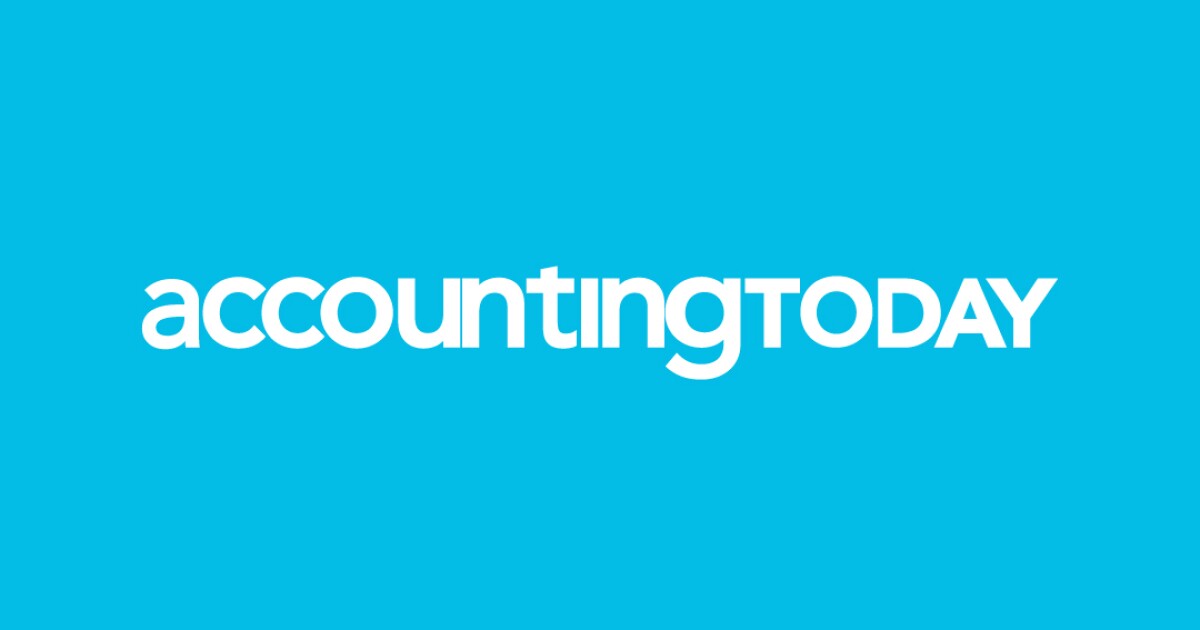Technology is relentless. You may have been up to date yesterday, but there’s probably an advance in current technology, or an entirely new technology, that can help you or your clients be more accurate, and more productive. And even provide new or better services to your clients. Alternatively, it might just be current technology of which you are either unaware, or just haven’t seen the need.
We asked a virtual panel of thought leaders for their suggestions on what products and technologies you might find helpful and/or useful in your practice or at your clients’ businesses. Here’s what they told us.
Something old, something new
Before heading out to try new technologies, give some thought to the technology you now have. It’s not uncommon to upgrade to a new PC and/or laptop every few years, as the technology and capabilities improve. But while upgrading one aspect of your computing array may be obvious, somewhat less obvious is the advantage of also upgrading the peripherals as well every once in a while.
One obvious place to upgrade your technology is the screen that you spend so much time looking at every day. If you’re using a desktop PC, a useful upgrade is simply a larger display. Moving from a 24-inch monitor to a 32-inch device is literally an eye opener. You don’t have to use every morsel of that screen space to display data, but the increase in real estate and resolution can be much easier on your eyes, especially after spending hours looking at it.
metamorworks – stock.adobe.com
“Using multiple monitors can significantly boost productivity by providing more screen real estate, allowing accountants to view multiple files or applications simultaneously without constantly toggling between windows,” Randy Johnston, executive vice president of K2 Enterprises, told us. And whether you are working with a desktop PC or a laptop, adding an extra display is fairly simple. With a desktop, you can get mounts for the desk that hold two or even three monitors if you don’t have enough clear space for them to sit directly on the desktop.
Laptops are another place where a second screen will generally prove useful, especially if you need to have a spreadsheet or word processing document open while you are working on yet a different application. USB monitors of 16 inches (or larger) are readily available from a number of vendors. Simply plug into a USB port on the laptop or on a docking station or hub if you have one.
Another laptop extender is a docking station or USB hub. One downside of many of the most recent laptops is a dearth of open ports. And that may also be true of many of today’s compact desktops. With more devices, such as headphones using USB rather than audio ports, higher-end webcams, as well as numerous flash drives and external USB drives, it’s easy to quickly run out of places to plug in.
That’s easily solvable. If you really need a variety of ports, such as an HDMI port for a full-size second laptop display, a docking station is the way to go. According to Johnston, “For those using laptops, a docking station can quickly turn a mobile workstation into a desktop-like environment with multiple monitors, keyboards and other peripherals.” If all you are looking for is adding some additional USB ports, a USB hub is an easy and inexpensive way to do so.
While you are inventorying your current setup, give some thought to the state of your communications. Are you current on your internet throughput? Over the last several years, internet access has become both faster and less expensive. If you haven’t upgraded in a while, it may be time to do so.
And while you are considering upgrades, also think about your Wi-Fi. Current Wi-Fi is up to Wi-Fi 6E, which adds faster speeds, and an additional frequency channel.
Most current desktops and laptops have this upgraded Wi-Fi capability, but if your router offers it, and your computers are still at the Wi-Fi 5 level, a USB dongle is an inexpensive upgrade. There is software that lets you check Wi-Fi signal strength throughout your office, and range extenders let you boost Wi-Fi connections in areas where signal strength is weak.
It may also be time for a router upgrade, both for speed and capacity, and enhanced security. Stephen Lawton, CEO of AFAB Consulting LLC, explains, “The built-in firewall with preconfigured rules in ISP-class routers no longer is sufficient to defend against sophisticated attacks that come through browsers, downloaded apps and other non-email attacks. Today’s defensive posture often starts with consumer-class, next generation firewalls (NGFW) and universal threat management (UTM) appliances with cloud-based, enterprise-style configurable software with drag-and-drop or checkbox rules. These devices are designed for SMBs as well as enterprises.”
Can you hear (and see) me now?
Many practices have benefited from creating client letters. But while they educate clients and prospects, they lack spontaneity and interaction with the client. This year’s client letters are podcasts. Podcasts targeted on areas of interest and/or importance to your clients provide a more immediate sense of how your practice can best serve existing and potential new clients. This is especially helpful if you have or are building a CAS. Creating and maintaining a podcast can be a daunting task, but it doesn’t necessarily have to be.
“Podcasting has branding benefits,” Blake Oliver, founder and CEO of Earmark, told us. “But beyond that, it’s an incredibly efficient way to create insightful content without taking too much time away from serving clients. Oliver goes on to explain some of the benefits. “As for episode topics, I invite colleagues, clients and prospects to join me as guests. We have insightful conversations about their expertise and passions as it relates to our work together. It provides value to them while generating helpful content for my audience. With the right technology, weekly podcasting has become an extremely efficient way for me to create content. It builds my brand, attracts business and strengthens relationships. I can’t think of a better use of one hour a week. It’s how I work smarter in today’s world.”
Setting up for podcasting can be a complex process, with high-end video and audio as well as editing hardware and software. But it doesn’t have to be. An informal approach to producing content can be effective, and in many cases, this type of approach can be much less complex but still very effective. In the end, it’s the content, and its relevance to your clients and prospects, that’s most important.
Having effective video and audio equipment doesn’t have to break the budget, and it’s a good way to both get familiar with the process, and determine if the results justify putting more effort and money into the hardware and process.
Expanding your apps
Another place to examine is how you employ technology in your actual practice. Depending on the size of your practice, it may not be practical to roll out a full-fledged HR system. But for even the smallest practice, customer relationship management software makes sense. CRM is more than just due-date monitoring, though this aspect of the application is certainly helpful. But most current CRM systems provide extensive marketing support as well as history that’s vital when dealing with clients. And who doesn’t want to have more, and more profitable, business?
Even if these applications have only limited applicability to your practice’s needs, there’s a good chance that some of your clients could benefit from adopting these, and other, applications — a boon to your CAS practice.
You think you’re so smart
Business intelligence is another technology you should be adding to your toolkit. “Accountants can use BI to analyze past financial data, sales numbers and customer purchase patterns to help predict future sales and purchase patterns. They can include variables like economic factors that might affect overall profitability.
Where BI can help is identifying which customer segments are profitable, which of the products or services generate the most revenue, and which regions are seeing the most sales. This will allow them to improve pricing strategies, invest more in specific markets, or expand into new offerings. “All these aspects can be tracked over time to see the effectiveness of the strategies implemented.” Val Steed, director accountants at Zoho Corporation, explained. “One of the key functions of self-service BI is it offers the flexibility to build custom dashboards and reports that can be drilled down to analyze the underlying metrics of any transaction. Typically, such tools are also capable of processing massive volumes of data using natural language processing (NLP), machine learning (ML) and AI which would not be possible with older technology. Businesses will be able to build visually appealing dashboards to derive key insights. These reports can then be shared with teams and clients for collaboration and better decision-making.”
Open the pod bay doors, HAL
No article about new technologies would be complete without discussing AI. And like the HAL 9000 in the movie “2001: A Space Odyssey,” AI is not always a great enabler. But that was true about the internet as well at its beginning, and still is. Just because the internet or an AI says something is true doesn’t necessarily mean that it is. That being said, AI in its several forms is proving to be a great enabler.
Generative AI, such as the now familiar ChatGPT, can offer a fine polish on the text-oriented material that you present to the client. Instead of just a financial statement, an understandable narrative provides a definitely better experience that your clients will appreciate. Johnston added, “Chatbots can be implemented to answer basic finance and accounting queries or assist with data entry and tasks.” AI is also useful in understanding what trends actually mean, and some AI implementations can make suggestions about actions to take to meet defined goals.
Another very useful application of AI technology is process automation. This is a growing and time and effort saving technology. Jim Bourke, managing director of advisory services at Withum LLC, calls these bots. “Bots have a tremendous opportunity to create major disruptions in our profession. Think about all of those manual repetitive tasks that accountants do day in and day out. Does not matter if it’s attest or tax, we are talking about a significant amount of manual, repetitive tasks. Bots, fueled by artificial intelligence, have the potential to rock our world.”
Johnston adds, “Robotic process automation (RPA) can automate repetitive tasks like data entry, transaction matching or even complex processes, allowing accountants to focus on more value-added activities.”
Georg Glantschnig, vice president of Dynamics 365 ERP at Microsoft, points out, “Advancements in LLMs (Large Language Models) are changing the way finance professionals can make decisions and reduce time spent on reporting and forecasting. For example, finance teams can engage with embedded natural language processing models in planning tools, enabling them to initiate what-if scenario planning iterations by asking critical questions and modeling their impacts. This empowers finance teams to anticipate and adjust for various outcomes proactively. Additionally, AI empowers finance professionals to deliver on autonomous finance objectives. In a survey released this year, we found 82% of finance leaders cited AI and automation as very important to helping evolve their team’s role to support their organization’s strategic goals.”
And while it’s not the first thing that comes to mind, the application of no-code/low-code technology makes it a far less labor-intensive way to churn out apps that are specifically targeted to meet a need that might otherwise be impractical to address.
“In addition to automation capabilities, low-code and no-code tools can be used by anyone — professional developers and non-technical business users alike — to rapidly build apps and virtual agents to automate manual tasks and streamline business processes,” Glantschnig adds.
Johnston also pointed out several other applications where AI can benefit your practice and clients. “While software like Excel is common, specialized tools like Tableau, QlikView or Power BI provide advanced data visualization and can help accountants extract deeper insights from data.” he told us. “Predictive analytics can help in forecasting and anomaly detection, and can make tasks like fraud detection more efficient. And software like Adaptive Insights or Anaplan that integrates budgeting, forecasting and financial reporting can streamline processes.”
The bottom line
Hopefully, this article has given you some ideas of where you can usefully employ new and existing technology to make your working life more productive. But it’s only just scratched the surface of where we are now, and where we can go from here. Technology moves at a blistering pace, and it’s more than a full-time job trying to keep up with it and how it can and will impact your practice. But trying to play catch-up is a lot more time and money intensive than just making a best effort to keep current.
If at all possible, try and appoint someone in your practice, obviously one of the savvier staff or partners, as the point person on keeping current. It’s truly a full-time job, and larger practices routinely assign this task to the IT department. But making a checklist of the areas where technology is employed, how it’s employed, and where there’s room for improvement and updating, can reap huge benefits.
Credit: Source link











